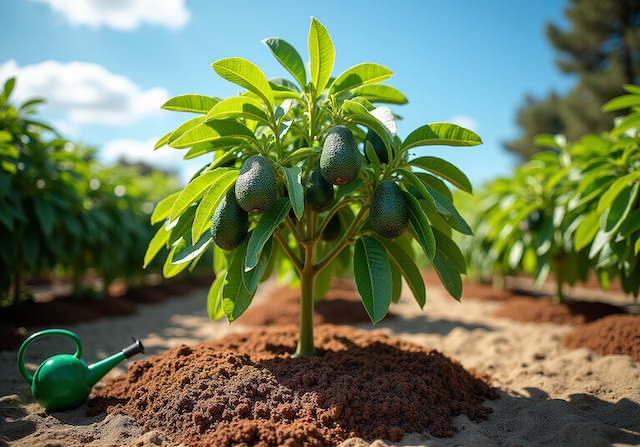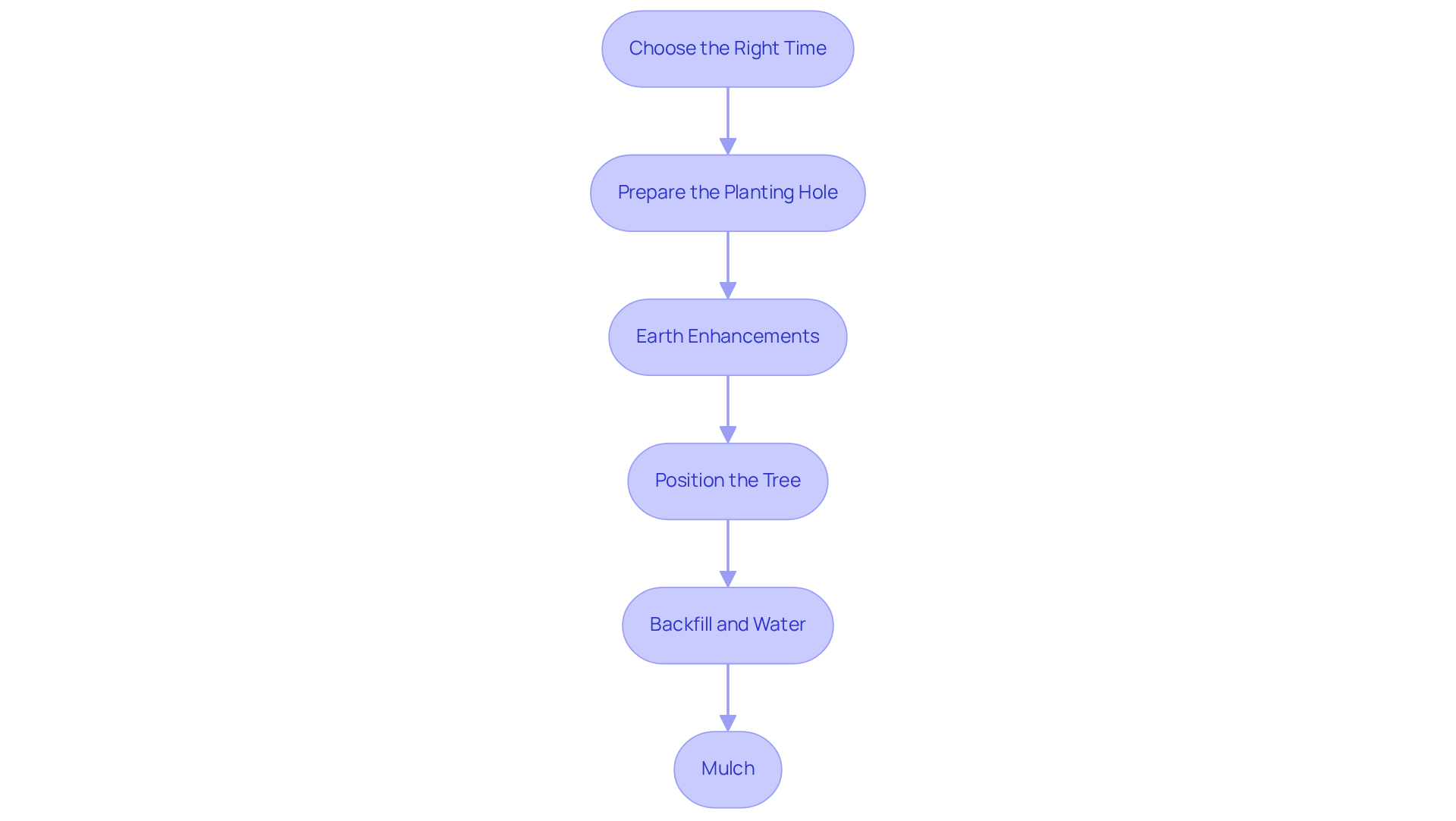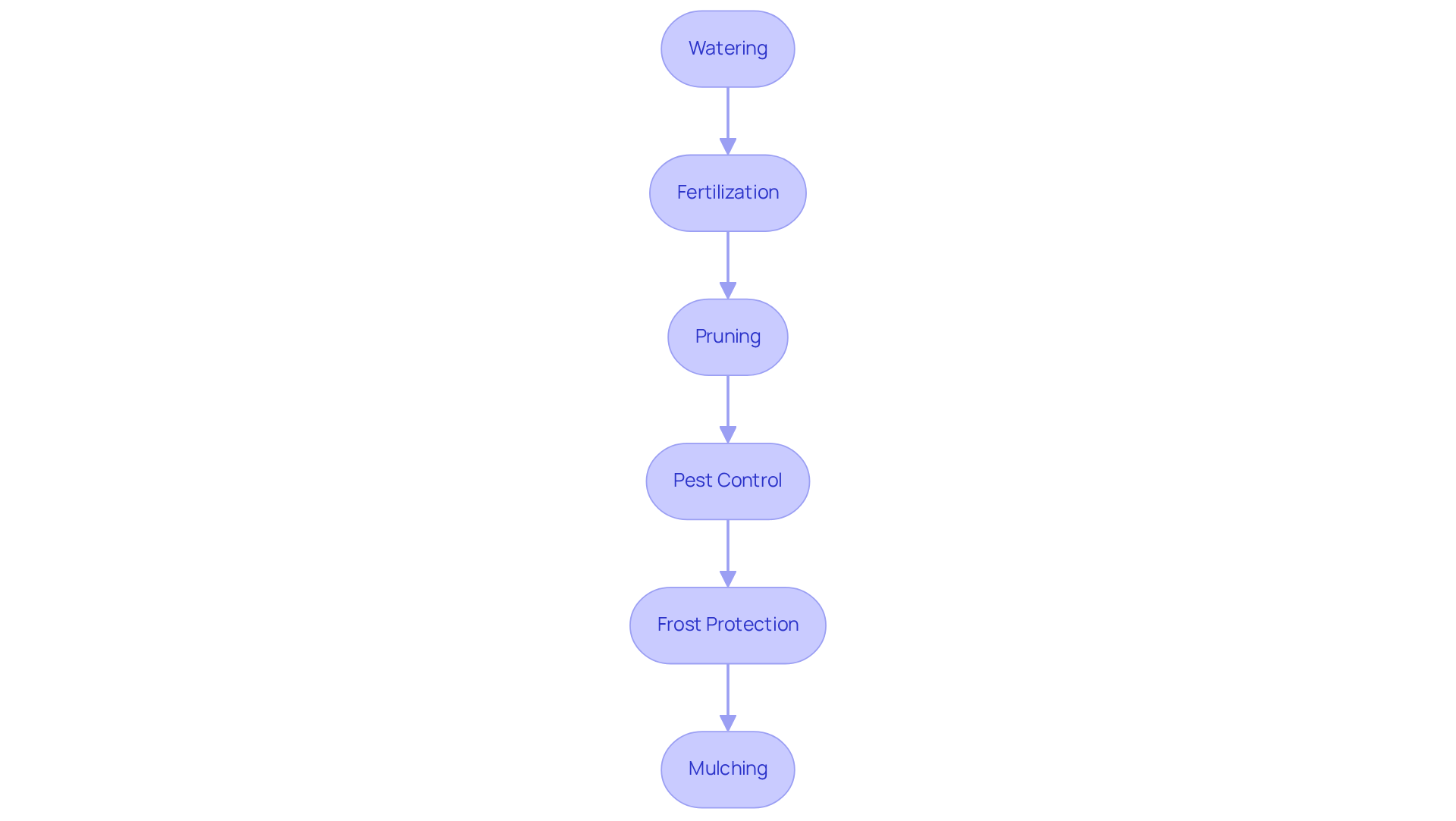
Grow Your Winter Mexican Avocado: Essential Steps for Success
Share
Successfully growing a winter Mexican avocado can be a rewarding venture for home gardeners. However, it requires a specific understanding of the plant's unique needs. This guide delves into the essential steps for cultivating these avocados, covering everything from selecting the right growing conditions to proper planting techniques and ongoing care. Yet, what happens when the ideal environment and care practices still lead to unexpected challenges? By exploring common issues and their solutions, gardeners will be empowered to nurture their avocado trees to fruitful maturity.
Want to grow avocados in your garden?
Explore Winter Mexican Avocado trees for sale at Everglades Farm - shipped directly from Florida.
Understand the Growing Conditions for Winter Mexican Avocado
Understanding the preferred growing conditions is crucial to successfully cultivate a winter Mexican avocado.
Climate: This avocado variety flourishes in USDA hardiness zones 9-11, where temperatures typically remain above 20°F (-6°C). It can withstand temperatures as low as 22°F (-6°C) and tolerate brief cold spells, making it suitable for regions like Florida and southern California.
Well-draining earth is vital for healthy growth. Aim for sandy loam with a pH between 6.0 and 7.0. Heavy clay soils that hold moisture can result in root rot, which is harmful to the plant's health.
Avocado plants require full sun exposure, ideally receiving at least six hours of direct sunlight each day. Ensure the planting location is free from shade caused by structures or other plants to promote optimal growth.
Irrigation: Young plants require consistent irrigation to establish roots, while mature specimens benefit from deep, infrequent watering. Allow the soil to dry out slightly between waterings to prevent over-saturation, which can harm root development.
Size Management of Avocados: It is suggested to trim back avocado plants to 10-15 feet from the ground after several years of growth to enhance fruit accessibility and improve sunlight and air circulation.
Fruit Production: Most avocado plants necessitate two specimens for fruit production, ideally one type A and one type B, to maximize yield. The seasonal avocado usually yields fruits that are 4-5 inches long and weigh between 0.75 - 1.2 lbs.
Longevity: Healthy avocado plants can survive for hundreds of years, with some reported to endure up to 400 years, making them a long-term investment for home gardeners.
By fulfilling these requirements, you establish a strong base for your avocado plant, improving its growth potential and fruit yield.
Plant the Winter Mexican Avocado Tree Properly
To successfully plant your Winter Mexican Avocado tree, follow these essential steps:
-
Choose the Right Time: The optimal time for planting is in the spring, after the last frost. This timing allows the tree to establish its roots before the winter months, ensuring a strong start to its growth.
-
Prepare the Planting Hole: Dig a hole that is twice as wide and the same depth as the root ball. This preparation ensures that the roots can spread easily and access nutrients effectively, promoting healthy development.
-
Earth Enhancements: Improve the excavated ground by blending in organic material, such as compost. This enhancement not only improves drainage but also enriches the soil with essential nutrients, fostering vigorous growth.
-
Position the Tree: Place the tree in the center of the hole, ensuring that the top of the root ball is level with the surrounding ground. Avoid planting too deep, as this can suffocate the roots and hinder growth, ultimately affecting the tree's health.
-
Backfill and Water: Carefully fill the hole with the modified earth, gently tamping it down to eliminate air pockets. Water thoroughly to help settle the soil around the roots, ensuring good contact and stability.
-
Mulch: Apply a layer of mulch around the base of the plant to retain moisture and suppress weeds. It's important to keep the mulch a few inches away from the trunk to prevent rot and promote healthy growth.
By following these guidelines, you provide your winter Mexican avocado plant with the best chance for vigorous growth and productive yields.

Maintain and Care for Your Winter Mexican Avocado Tree
To maintain and care for your Winter Mexican Avocado tree, follow these guidelines:
-
Watering: Water deeply but infrequently, allowing the top 2-3 inches of soil to dry out between waterings. During dry spells, increase watering frequency to ensure your tree receives adequate moisture.
-
Fertilization: Use a balanced fertilizer specifically designed for fruit plants. Apply it in early spring and again in late summer, following package instructions for dosage to promote healthy growth.
-
Pruning: Lightly trim the plant to remove any dead or crossing branches. This practice encourages better air circulation and sunlight penetration, which are essential for optimal fruit production.
-
Pest Control: Regularly examine your plant for pests like avocado thrips and mites. Utilize organic insecticidal soap or neem oil as needed to control infestations, ensuring the health of your tree.
-
Frost Protection: In colder regions, shield your plant from frost by covering it with frost cloth or relocating potted plants indoors during extreme cold. This will help prevent damage and promote resilience.
-
Mulching: Replenish mulch annually to maintain moisture levels and suppress weeds, creating a more favorable environment for your avocado tree.
By following these care practices, your winter Mexican avocado tree will remain healthy and fruitful, giving you delicious avocados for years to come.

Troubleshoot Common Issues in Growing Winter Mexican Avocado
Here are some common issues you may encounter while growing your Winter Mexican Avocado, along with effective troubleshooting strategies:
-
Leaf Yellowing: This issue can indicate overwatering or nutrient deficiency. Yellow leaves often signify insufficient fertilization; therefore, it's essential to check moisture levels and consider applying a balanced nutrient if the ground is too dry. For optimal growth, avocado plants require a balanced diet that includes nitrogen, phosphorus, and potassium.
-
Poor Fruit Production: If your tree appears healthy but is not producing fruit, it may require a pollinator. Planting a flowering Type A avocado nearby can enhance pollination, significantly increasing fruit set.
-
Brown Leaf Tips: This condition frequently results from salt accumulation in the soil or insufficient watering. Flushing the earth with water can help eliminate excess salts, and ensuring consistent watering is crucial. Regular monitoring of soil moisture is essential, as avocado plants typically need about 0.8 cups of water every 9 days when potted in a 5.0" pot.
-
Pest Infestations: If you notice holes in leaves or webbing, it's important to inspect for pests. Utilizing organic pesticides or introducing beneficial insects like ladybugs can effectively control pest populations. Regular monitoring for pests is vital to prevent further damage.
-
Fungal Diseases: Be on the lookout for signs of root rot or leaf spots. Ensuring proper drainage and avoiding overhead watering can minimize fungal issues. Promptly addressing any signs of distress is key to maintaining plant health.
-
Frost Damage: If leaves appear wilted or brown after a frost, protect your plant with frost cloth and consider moving potted plants indoors during cold snaps to prevent harm.
By recognizing these issues early and applying the appropriate solutions, you can ensure the continued health and productivity of your winter Mexican avocado tree.
Conclusion
Successfully cultivating a winter Mexican avocado requires a comprehensive understanding of the plant's specific needs and careful attention to its growth environment. By mastering the essential steps of planting, maintaining, and troubleshooting, gardeners can ensure a bountiful harvest of these delicious fruits.
This guide outlines critical factors such as:
- Ideal climate conditions
- The importance of proper soil drainage
- The necessity of adequate sunlight
It emphasizes the significance of planting techniques, including:
- The right timing
- Soil enhancements
As well as ongoing care practices like:
- Appropriate watering
- Fertilization
- Pest management
Recognizing and addressing common issues, such as leaf yellowing and poor fruit production, can further enhance the success of avocado cultivation.
Ultimately, growing a winter Mexican avocado tree is not merely about planting a seed; it represents a long-term commitment to nurturing a resilient and fruitful plant. By applying the insights shared in this guide, gardeners are encouraged to embrace the journey of avocado cultivation, reaping the rewards of their efforts with homegrown avocados that can thrive for generations.
Grow Your Own Winter Mexican Avocados Today!
Unlock expert tips and quality trees from Everglades Farm to enjoy a bountiful harvest in your backyard.
Frequently Asked Questions
What are the ideal climate conditions for growing winter Mexican avocados?
Winter Mexican avocados thrive in USDA hardiness zones 9-11, where temperatures typically remain above 20°F (-6°C). They can withstand temperatures as low as 22°F (-6°C) and tolerate brief cold spells.
What type of soil is best for winter Mexican avocados?
Well-draining sandy loam with a pH between 6.0 and 7.0 is ideal for winter Mexican avocados. Heavy clay soils that retain moisture can lead to root rot, which is detrimental to the plant's health.
How much sunlight do winter Mexican avocado plants need?
Avocado plants require full sun exposure, ideally receiving at least six hours of direct sunlight each day. The planting location should be free from shade caused by structures or other plants.
How should I irrigate winter Mexican avocado plants?
Young avocado plants need consistent irrigation to establish roots, while mature plants benefit from deep, infrequent watering. It's important to allow the soil to dry out slightly between waterings to prevent over-saturation.
Is there a recommended size for managing avocado plant growth?
It is suggested to trim back avocado plants to 10-15 feet from the ground after several years of growth to enhance fruit accessibility and improve sunlight and air circulation.
Do I need more than one avocado plant for fruit production?
Yes, most avocado plants require two specimens for fruit production, ideally one type A and one type B, to maximize yield.
What is the typical size and weight of fruits produced by winter Mexican avocados?
The seasonal avocado usually yields fruits that are 4-5 inches long and weigh between 0.75 - 1.2 lbs.
How long can avocado plants live?
Healthy avocado plants can survive for hundreds of years, with some reported to endure up to 400 years, making them a long-term investment for home gardeners.


